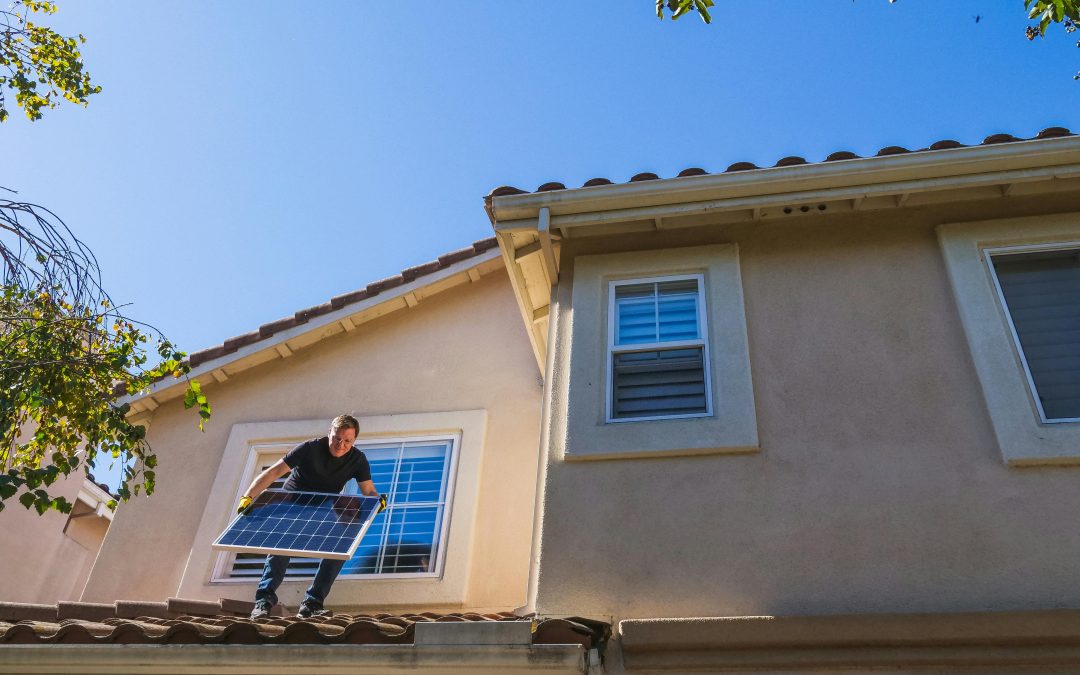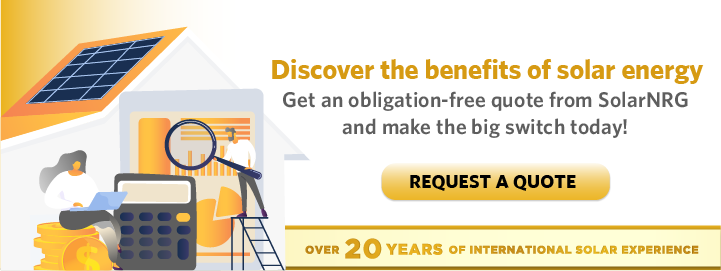The Philippines, with its tropical climate and abundant sunshine year-round, is in a prime position to harness solar energy, and that’s why more homeowners recognize and embrace the benefits of solar power’s potential, which continues to rise.
However, one crucial factor often overlooked in maximizing solar efficiency is house orientation.
Home positioning is crucial as it affects the amount of sunlight your solar panels receive, how efficiently your home stays cool, and how much energy you can save.
In this blog, we’ll explore the importance of house orientation in optimizing solar energy collection. You’ll learn about key positioning principles, how orientation affects solar panel efficiency, and practical tips to ensure your home makes the most of the sun’s power.
What is House Orientation (and Why Does It Matter for Solar Energy)?
House orientation refers to the direction your home and solar panels face, which directly impacts how much sunlight they receive and, in turn, how much energy they generate. In the Philippines, the ideal orientation for solar panels is south-facing because that’s where the sun is strongest. This positioning allows them to absorb the most sunlight daily, maximizing efficiency.
The angle of the panels should also align with your location’s latitude to optimize energy capture, as this positioning ensures maximum sunlight exposure throughout the year. On top of that, obstructions like trees, buildings, or other structures should not interfere with shading, which can significantly reduce solar output.
A properly oriented solar panel system can generate up to 30% more energy than a poorly positioned one. Homes designed with optimal solar orientation benefit from higher energy efficiency, lower electricity costs, and a more sustainable power source than homes that lack one.
5 Key Factors to Consider When Positioning Your Home for Solar Efficiency
Capturing solar energy starts with installing panels on your roof, alongside properly positioning them to maximize sunlight exposure, ensure structural compatibility, and account for environmental factors that can impact performance. Carefully considering these elements can help you significantly improve your solar panel system’s efficiency and long-term benefits.
Here are some of the factors you should be mindful of when choosing a direction for your home.
-
Sunlight exposure
Solar panels don’t require full sunlight, but the machine’s energy production directly correlates .
For peak efficiency, solar panels need 1,000 W/m² of sunlight. In the northern hemisphere, panels should face south, while in the southern hemisphere, they should face north. Proper orientation ensures solar systems absorb the most sunlight throughout the day, maximizing electricity output.
-
Roof angle and design
The ideal tilt for solar panels depends on location. A flatter angle works best near the equator, while steeper angles help in areas with shorter winter days. Roof material also matters. Builders usually use asphalt shingles, metal, and clay tiles. Older roofs may need reinforcement to handle the panels’ weight.
-
Shading and obstructions
The cover that trees, buildings, or bird droppings inadvertently provide can significantly reduce solar output since siphoning solar energy needs panels that have no unobstructed access to sunlight.
If shading is unavoidable, using half-cut solar cells and module-level power electronics (MLPEs) can minimize energy losses by allowing unaffected sections to keep generating power.
-
Ventilation and cooling
Solar panels work best at lower temperatures because excessive heat increases electrical resistance in the cells, reducing their efficiency and overall power output. A well-ventilated installation helps dissipate heat, ensuring optimal power output and longevity. Cooling systems can further prevent thermal degradation, keeping panels in top condition.
-
Weather conditions
Solar panels continue to function on cloudy or rainy days, producing 10%–60% of their usual output. Likewise, colder temperatures improve efficiency, preventing overheating and ensuring consistent performance year-round.
7 Practical Tips for Optimizing House Orientation for Solar Energy
Optimizing your home’s orientation for solar energy ensures maximum efficiency, greater energy savings, and long-term sustainability. Whether you’re designing a new home or upgrading an existing one, these practical tips can help maximize the power of your solar panel system.
-
Choose the right solar panel
Selecting high-efficiency solar panels for homes can make a significant difference Monocrystalline panels provide the highest efficiency and are best suited for limited spaces, while polycrystalline panels are more budget-friendly but slightly less efficient.
Thin-film panels are flexible and lightweight but generally less powerful. Researching warranties and quality indicators can help you make a well-informed decision.
-
Adjust roof angle
If your roof is flat or at an unideal angle, adjustable mounts that allow for seasonal adjustments can improve efficiency. For ground-mounted systems, solar tracking systems that follow the sun’s movement throughout the day can further boost performance.
-
Minimize shading
Obstructions like trees, buildings, or seasonal foliage can impact solar efficiency. Solar pathfinders can help you assess shading patterns, ensuring your panels receive uninterrupted sunlight. Regular reassessment can also help prevent unexpected efficiency losses.
-
Maximize east-west orientation
If a south-facing orientation isn’t feasible, an east-west arrangement can still produce strong energy because it captures both morning and afternoon sunlight.
Proper installation is essential to maximizing efficiency, as factors like panel tilt, wiring, and shading directly impact performance. As such, choosing a reliable solar installer is critical for ensuring optimal system output and long-term reliability.
-
Plan for future solar expansion
Leaving room for additional panels allows you to expand your system later. A well-planned installation boosts efficiency and makes solar panels suitable for increasing home value.
-
Account for local climate patterns
Climate conditions significantly influence solar panel efficiency in terms of energy output and system longevity. You should consider how these factors contribute to optimal performance and durability in various environments.
- Humidity: Prolonged moisture exposure can lead to corrosion, so regular maintenance is important for longevity.
- Rain: Helps clean panels but requires proper drainage.
- Wind: Secure mounting is crucial, especially in storm-prone areas.
Illuminate Your Path to a Sustainable Future
In the land of endless sunshine, your home’s orientation holds the power to unlock endless energy possibilities. A seemingly simple adjustment to your space makes all the difference as you harness the full potential of sunlight. Remember, you’re not just cutting down on electricity bills—you’re taking a bold step toward a cleaner, greener world.
Your sustainable future starts today. Reach out now and let SolarNRG guide you on the path to energy independence, one panel at a time!


Recent Comments